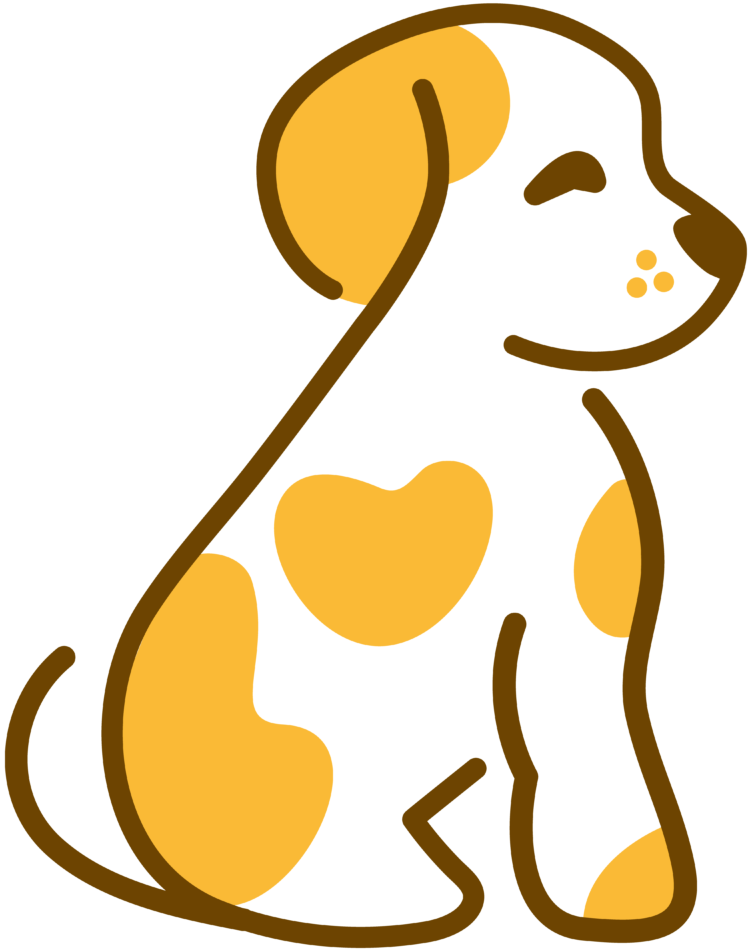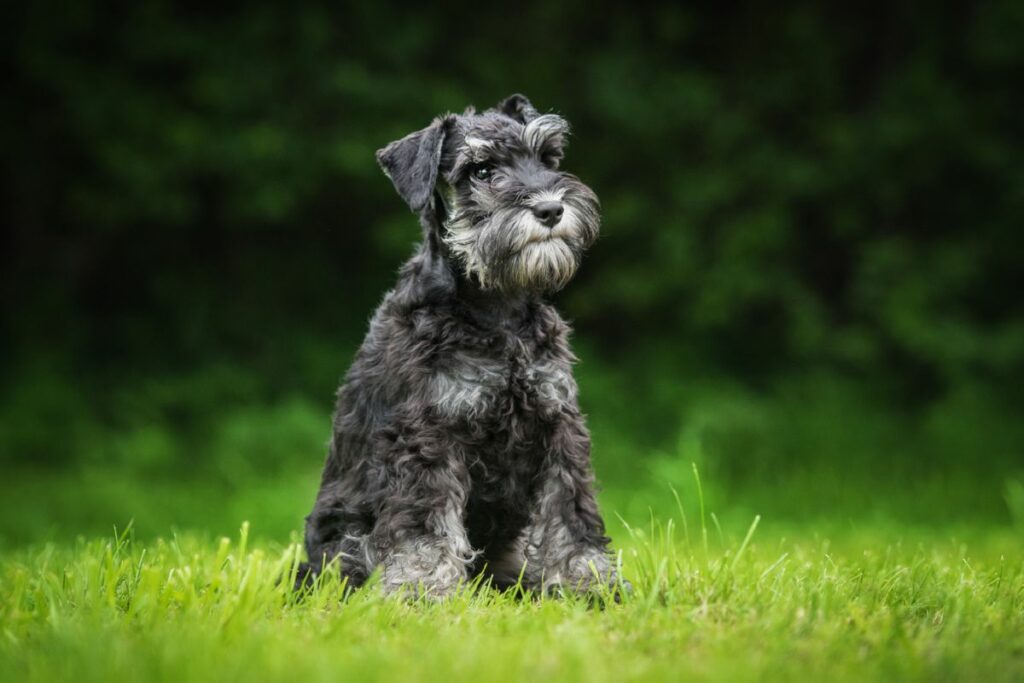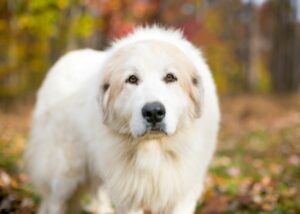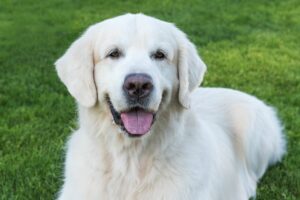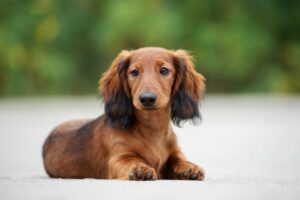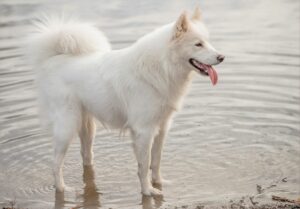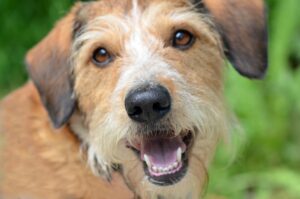The Miniature Schnauzer is a popular dog breed and originally comes from Germany. There he was mainly used to fight vermin. Nowadays, this dog is suitable as a family dog, but it certainly still has its hunting instinct. The Miniature Schnauzer is friendly, loyal and lively. He gets along well with children and enjoys undertaking activities with his owner. Because of his small size, he can live in an apartment.
But his preference is for a house with a large garden, where a Miniature Schnauzer can let off steam. After all, he loves to be outside. The coat of the Miniature Schnauzer needs a relatively large amount of grooming to keep it looking good. An advantage of his coat is that it does not shed much. People with allergies therefore experience fewer complaints with this dog. Have you become curious and would you like to know more about the Miniature Schnauzer? Then read this article!
The history: a rat catcher from Germany
The Miniature Schnauzer originated in Germany in the mid-nineteenth century. It is the smallest type among the Schnauzers. The Germans were looking for a farm dog that could chase away pests such as rats. Earlier, the standard Schnauzer was used for this purpose, but this dog took up more space and the maintenance costs were more expensive. Breeders decided to cross the standard Schnauzers with Affenpinschers and Poodles. This cross-resulted in the Miniature Schnauzer, a smaller dog that was better at chasing away vermin.
Today, the Miniature Schnauzer is a popular family dog. The hunting instinct for small pests still has this dog breed in it. The Miniature Schnauzer first came to America after World War I. There this dog breed became immediately popular. Also in the Netherlands the Miniature Schnauzer is common and it is a popular pet.
The character: obedient, lively and friendly
The Miniature Schnauzer is a friendly dog and is nowadays a very popular pet. This dog breed likes to undertake activities with his owner and/or family. He prefers to be close to you and likes to be in the center of attention. Due to its size, this dog is easy to take anywhere. The Miniature Schnauzer is lively, playful and loyal.
Despite its small size, it is a real watchdog. He is alert and will warn you if strange people enter his territory. He will bark a lot in the process, but you can unlearn this at a young age. The Miniature Schnauzer is intelligent and obedient. This makes it relatively easy to train and socialize him. If he is not socialized properly, then there is a chance that he will show aggression towards large dogs. How best to socialize a Miniature Schnauzer, you will read later in this article.
Due to its friendly nature, the Miniature Schnauzer is suitable as a family dog. He gets along well with children and other pets. It is wise to socialize the Miniature Schnauzer early with children and pets. It is also important to always supervise, especially if there are small pets around him. Due to his instinct to chase small animals, he may sometimes chase small pets.
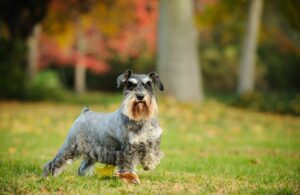
The appearance of a Miniature Schnauzer
The Miniature Schnauzer is a small dog, but has a powerful appearance. A male dog has a height at the withers between 30 and 36 centimeters and weighs between 5.5 and 9 kilograms. A bitch has a height at the withers between 28 and 34 centimeters and weighs between 5.4 and 8.2 kilograms. In terms of size, the male and female are relatively close to each other. A male dog is slightly larger and heavier.
The physique of a Miniature Schnauzer is square. The chest of a Miniature Schnauzer is broad and the legs are straight and powerful. Its skull is elongated and the forehead is flat. The eyes are large and expressive. They reflect his friendly and cheerful nature. The Miniature Schnauzer has a beard and thick eyebrows. The large and hairy eyebrows are characteristic of a Miniature Schnauzer. He has a powerful upper and lower jaw and his lips are smooth and black. The nose is also black in color. The ears hang down and are set high.
The tail of a Miniature Schnauzer is often shortened to prevent injuries while running. This is usually done on the third or fourth day. The shortening of a tail is also called tail docking. It is almost impossible to find a Miniature Schnauzer puppy with a long tail. The Miniature Schnauzer comes in the following colors:
- Black
- Pepper and Salt
- White
- Black and silver.
A pepper and salt colored coat is most common in a Miniature Schnauzer. The Miniature Schnauzer has a double coat. The coat is thread-like and hard and the under coat is soft.
The care: intensive care is important
The Miniature Schnauzer has a double coat, but sheds minimally. This makes this dog breed suitable for people with allergies. Despite the fact that the Miniature Schnauzer has little shedding, it is important to brush the dog every day. If you brush the coat every day, then the texture of the coat will be preserved and it will look neat.
In addition, periodic plucking and trimming is necessary in proper coat care. It is important for a Schnauzer to go to professional grooming once every five to eight weeks. In addition, the Miniature Schnauzer should be bathed once a month. Depending on the environment he lives in, this may be a little more often.
The dog’s nails should be checked and trimmed every month. Trimming the nails can be done with a special dog nail clipper. The eyes and ears should be cleaned weekly; this reduces the risk of infections. A Miniature Schnauzer requires quite a lot of care. It is important to be aware of this. Make sure you have enough time to properly care for the dog.

Are there any diseases that occur in the Miniature Schnauzer?
A Miniature Schnauzer reaches an average age of twelve to fifteen years. In general, it is a healthy dog breed. However, there are some health problems that you should be aware of:
- Eye problems
- Urolithiasis
- Aspiration pneumonia
Eye problems can occur in a Miniature Schnauzer. Eye problems can be hereditary, but can also occur later in life. Cataract is a condition that sometimes occurs in a Miniature Schnauzer. This is a kind of clouding in front of the eye lens that causes the lens to gradually become covered. This causes the vision to deteriorate and the dog may eventually go blind. Surgery can remedy this.
Urolithiasis is a condition of the kidneys. This condition causes kidney stones to form in various sizes and shapes. In many cases, this can be remedied with surgery. To prevent recurrence, special diet of high quality is recommended.
Aspiration pneumonia is a condition of the esophagus. The esophagus connects the mouth and the stomach. This condition causes food to remain in the esophagus and may relapse. Therefore, it is important to keep an eye on whether your dog is getting and keeping his food in properly.
In addition to the above conditions, it is important to keep an eye on your dog’s overall health. In case of changes in behavior or appearance, you can always call the vet. He will give you advice and possibly conduct further investigations.
Did you know?
Schnauzer means “beard” in German. So the Miniature Schnauzer got its name from its distinctive beard. The standard Schnauzer and the Riesenschnauzer also have a beard.
Dog training for this breed
The Miniature Schnauzer is an intelligent dog. He is obedient and easy to train. Due to his high intelligence, it is important to keep the training varied and interesting. Otherwise he will quickly get bored and distracted. The Miniature Schnauzer likes to please its owner and this makes it an excellent companion.
It is recommended to take a Miniature Schnauzer to a basic course or puppy training. This is not only recommended for a Miniature Schnauzer, but this applies to any dog. During puppy training your dog learns to listen to you and you build a better bond with your dog. Also, the basic commands are discussed. The basic course contributes to early and proper socialization.
Dog sports such as obedience, agility and rally events are very suitable for a Miniature Schnauzer. He will do very well in dog sports because of his intelligence and obedience. After basic training, you can choose to start training your dog in any of these dog sports.
What does a Miniature Schnauzer cost?
A Miniature Schnauzer with a normal pedigree costs on average between $1000 and $1700. This amount you pay at a recognized breeder. It is recommended to buy a puppy from an authorized breeder, because he takes the best care of the mother dog and puppies. He is also aware of any hereditary diseases and disorders.
Miniature Schnauzer puppies from reputable breeders are more expensive. Then you pay on average $1800 and $2900 for a puppy. This is recommended if you want to participate with the Miniature Schnauzer in a dog show. If you are looking for a family dog, you do not have to pay this amount and a puppy with a normal pedigree is also suitable.
In addition to the cost of a puppy, there are maintenance costs that you should take into account. Think of a basket, leash, food bowl and grooming products. You also have to take into account recurring costs for the vet, food, training and dog tax. It is important to be aware of this and only take in a dog if you have the budget for it.
How much exercise does this breed need?
The Miniature Schnauzer is a small dog and can live in an apartment. It is a lively dog that is content when given its daily walks and playtime. This dog breed adapts easily. The Miniature Schnauzer also likes to live in a house with a large garden. After all, he loves to play outside. Sufficient physical exercise ensures that a dog remains mentally and physically healthy.
The Miniature Schnauzer likes to undertake activities with his family, so it is fun to take him everywhere. Different environments and situations contribute to good socialization. It is important to keep a Miniature Schnauzer on a leash at all times. This is due to his strong prey drive. Outside he will tend to run after small animals.
Recognition in the US
The AKC officially recognized the Miniature Schnauzer in 1926. This means that it is a healthy dog breed that may be bred with and can participate in various sporting events. There is also a breed association in the US that deals with the Miniature Schnauzer. The American Miniature Schnauzer Club organizes, among other things, events for this breed. Also, you can contact them if you are looking for a puppy.
Do you already own a Miniature Schnauzer or are you planning to purchase one?
A Miniature Schnauzer is a friendly, loyal and playful companion. He has great adaptability and can live well in an apartment as well as in a spacious house. It is important to give this lively dog breed enough exercise and play time. This will keep your dog physically and mentally healthy. Despite its size, it is a suitable watchdog.
He has a strong prey drive and will need to be well socialized with other small pets. Do you have a Miniature Schnauzer and would you like to share your experience? Or are you planning to purchase a Miniature Schnauzer? Then leave a comment below this article and get in touch with other Miniature Schnauzer lovers!
